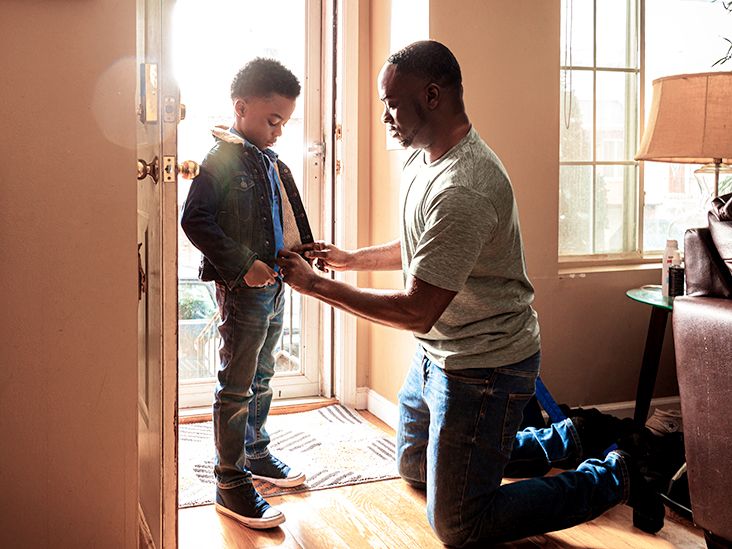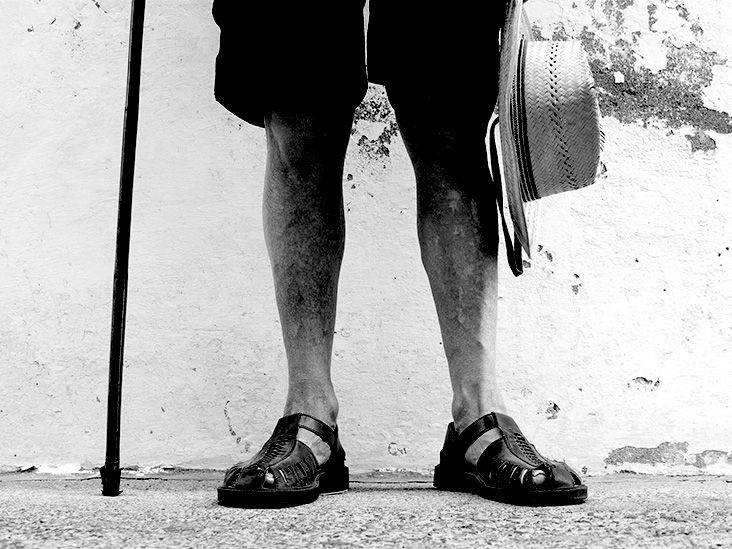How long is orchiectomy recovery? Most people get back to light daily life in 2 to 3 weeks, and that puffy, tender swelling usually calms down by weeks 2 to 4. Heavy lifting and sweaty workouts? Give those a respectful 4 to 6 weeks.
Right now, the essentials matter most: keeping pain controlled, caring for your incision, preventing constipation, and knowing when to call your doctor. Below is your clear, step-by-step plan for post orchiectomy careno fluff, just what genuinely helps. Take a deep breath; you've got this, and I'm walking with you.
Quick answers
First 72 hours: pain, swelling, and support
Those first days are about comfort and calm. Expect soreness at the incision and a heavy, bruised feeling in the scrotum or groin. It can look alarmingpurple, yellow, a bit swollenbut that's typical. Gentle wins the race here.
Normal vs. not-normal pain and swelling signs
Normal: aching that improves with medication, mild to moderate swelling, bruising that spreads a little then fades, and discomfort that eases when you lie down with support. Not-normal: pain getting worse each day instead of better, one side ballooning rapidly, hot redness streaking away from the wound, or fever and chills. If your gut says "this isn't right," listen and call.
Ice, supportive underwear/compression shorts, and short walks
Use an ice pack wrapped in a cloth for 1520 minutes at a time, several times a day for the first 4872 hours. Slip into snug briefs or compression shorts (boxers can tug and jostle). Take brief, frequent walksthink hallway lapsto reduce stiffness and lower blood clot risk. Sit or lie down with a folded towel under the scrotum for gentle elevation.
Days 414: activity, driving, and work
This is the "steady progress" window. Swelling and bruising begin to mellow. You'll feel more like yourself, but resist the urge to test the limits too soon.
When most people can shower, drive, and return to desk work
Many surgeons allow showering within 2448 hourslet water run over the incision, then pat dry. You'll often be cleared to drive once you're off prescription pain meds and can stomp the brake without wincingusually around days 47. Desk work often resumes within 12 weeks, while physical jobs need longer.
What to avoid: baths, swimming, sex, strenuous exercise
No soaking (baths, hot tubs, pools) until your incision is sealedgenerally 24 weeks. Skip sex and masturbation until your surgeon gives the okay; friction too early can pull at the incision and spike swelling. Avoid heavy lifting (generally more than a grocery bag or two), running, or core-straining moves for at least 4 weeks.
Weeks 36: back to you, gradually
By now, swelling is down and tenderness is mild. Curiosity returns: can you jog? Cycle? Lift? The answer is yesslowly and thoughtfully.
Lifting limits, jogging/cycling timelines, and scar care basics
Keep lifting under 1015 pounds until week 4, then scale up as comfortable. Many people try light jogging around weeks 45 and easy cycling by weeks 46use padded shorts and adjust saddle height/tilt for comfort. For scars: cleanse, protect from sun, and once closed, consider silicone gel/sheets to support a flatter, softer scar. No harsh scrubbing. Patience beats perfection.
Beyond 6 weeks: life after orchiectomy
Past the six-week mark, most folks are fully back to daily living and easing into normal workouts. Energy, mood, and libido often stabilize. If both testicles were removed, this is also when testosterone plans settle into a rhythm. You're moving from healing to rebuilding, which is a powerful place to be.
Energy, libido, and moodwhat often improves with time
Fatigue and mood dips tend to lift as pain fades and sleep normalizes. Libido may ebb and flow with stress and hormones. Give yourself gracehealing isn't linear. If things feel "stuck" for more than a few weeks, that's your sign to check in with your care team.
Core care
Pain management done right
Pain has a way of bossing you around if you let it. The trick is to stay a step ahead without overdoing meds.
OTC vs. prescription options, dosing basics, and when to switch
Many surgeons suggest alternating acetaminophen and an NSAID like ibuprofen (unless contraindicated). If you were sent home with a short course of stronger meds, use the smallest effective dose and taper quickly. As swelling eases, transition to OTC only. If pain spikes when you reduce meds, pause and reassessare you too active? Has constipation kicked in? Adjust, then try again.
Non-drug strategies: ice, positioning, pelvic support
Ice, snug briefs, and time lying down with the scrotum supported are underrated heroes. A small pillow between your knees when sleeping can reduce pulling. Gentle breathwork lowers muscle tension and pain perceptionit's simple and it helps.
Incision care that promotes healing
Your incision wants three things: clean, dry, and protected. Give it that, and it will reward you.
Showering, drying, dissolvable stitches, and bandage changes
Shower as directedusually after 12 daysletting water flow over the area. Pat completely dry. Most stitches are dissolvable; they'll flake out over 13 weeks. Change dressings as instructed, keeping the site dry. A little clear or pinkish drainage is common early on.
What delays healing (alcohol/hydrogen peroxide, moisture, friction)
Avoid alcohol or hydrogen peroxide on the wound; they irritate healthy tissue and slow healing. Moisture trapped by thick ointments or wet dressings invites maceration. Friction from loose boxers or long walks without support can inflame the area. Keep it simple and gentle.
Bowel care to prevent straining
Constipation after surgery is the worst kind of surprise guest. Anesthesia, pain meds, and less movement all conspire here. Plan ahead.
Fiber, fluids, stool softeners, and gentle movement
Drink water like it's your job. Add fiber-rich foods (berries, oats, beans) and consider a stool softener for the first week if your doctor approves. Daily easy walks help your gut wake up. If needed, an osmotic laxative can be your safety netask your care team first.
When to call if you haven't had a bowel movement
No bowel movement by day 34, with cramping or vomiting? Call. Severe straining can hurt, and you deserve relief before it becomes a bigger issue.
Activity and mobility milestones
Movement is medicine, but dosing matters. Think "progress, not perfection."
Walking plan: daily progression and signs to ease off
Day 13: 5 minutes, 35 times/day. Day 47: 10 minutes, 23 times/day. Week 2: 1520 minutes daily. If your pain jumps to more than mild soreness, or swelling increases hours later, you pushed too far. Dial it back, ice, and try again tomorrow.
Return-to-work guidelines by job type
- Desk/remote work: 12 weeks, with stand-and-stretch breaks.
- Light duty/retail: 23 weeks if lifting is minimal.
- Manual labor/heavy lifting: 46 weeks, sometimes longerget explicit clearance.
Side effects
If one testicle was removed (unilateral orchiectomy)
Good news: one healthy testicle often covers the workload for testosterone and sperm production. Many people notice little to no long-term change in sex function.
Fertility, testosterone, and sexual function outlook
Most maintain normal erections, libido, and energy. That said, stress, pain, and worry can temporarily dampen desire. If you're trying to conceive, it's reasonable to ask about a semen analysis once healed. Testosterone levels can be checked if you feel persistently low energy or low libido.
When to consider semen analysis or sperm banking (pre-op/post-op context)
Before testicular cancer surgery, many teams recommend sperm bankingjust in case. After surgery, if fertility is on your mind, a semen analysis can give clarity. If quality or count is low, a fertility specialist can discuss next steps.
If both testicles were removed (bilateral)
Bilateral orchiectomy means your body will need testosterone from outside sources. This is manageable and common; it just takes a plan.
Low testosterone symptoms: hot flashes, low libido, ED, mood changes
Watch for hot flashes, lower sex drive, erectile changes, fatigue, brain fog, and mood shifts. Bone and metabolic health also matter long term without testosterone support.
Hormone replacement therapy basics and follow-up labs
Options include gels, patches, injections, and longer-acting pellets. Your clinician will tailor dose and schedule. Expect labs to check testosterone, blood counts, and sometimes lipids and PSA based on your history, with adjustments over the first few months.
Emotional health and body image
This part doesn't always get enough airtime, but it's real. Your body changed, and feelings can surprise youpride, grief, relief, all in the same week. You're allowed to feel it all.
Testicular prosthesis: options, timing, feel, and risks
A prosthetic testicle can be placed during surgery or later. They come in sizes so the look matches your body. Most people report a natural appearance and comfortable feel. Risks include infection or malposition (uncommon). It's your callthere's no right or wrong.
Coping strategies; when to reach out for support
Talk to someone who "gets it." A short course of counseling, peer groups, or an honest conversation with your partner can lighten the load. If mood changes persist, ask your clinician for a referralstrong is asking for help when you need it.
Life after
Sex after orchiectomy: timing and comfort
When can you resume sex or masturbation? Many get clearance around 34 weeks if the incision is healed and pain is minimal. Start slow, communicate openly, and use lubrication if needed.
Typical clearance timelines for sex/masturbation and what to expect
Early attempts may feel awkwardsome pulling, some nerves. That's normal. Positioning that keeps pressure off the groin helps. If ejaculating causes sharp pain or you notice blood, pause and check in with your surgeon.
Managing ED, pain, and desirewhen to see a specialist
Short-term erectile hiccups are common due to anxiety and pain. If issues persist past a few monthsor right away after bilateral surgerytalk to a urologist. Options include medications, counseling, pelvic floor therapy, and hormone treatment when indicated.
Returning to fitness and sports
Your comeback can be steady and smart. Think of your core and pelvic floor as your foundationprotect them and everything else follows.
Core and pelvic support, gradual loading, red flags during exercise
Start with walking and gentle core activation (diaphragmatic breathing, pelvic tilts). Add bodyweight squats and light resistance after week 34. Red flags: sharp groin pain, sudden swelling, or incision pulling. If it hurts in a "wrong" way, stop and reassess.
Work, travel, and daily living hacks
Small tweaks make big differences when you're healing.
Driving, flights, bathroom planning, and clothing tips for comfort
- Driving: cushion the seat edge; take stretch breaks on longer trips.
- Flights: aisle seat, compression socks, walk every hour if you can.
- Bathroom: keep a stool softener and a water bottle handy the first week.
- Clothing: snug briefs or compression shorts, soft waistbands, breathable fabrics.
Cancer care
Follow-up and pathology: what the results mean
If your orchiectomy was for testicular cancer, your pathology report is your roadmap. It tells you the type and stage, which guides next steps. Follow-up usually includes regular visits, tumor marker blood tests, and imaging. According to the Cancer Research UK after-surgery guidance, most people return to many normal activities within about two weeks, but surveillance and recovery timelines vary by stage and any additional treatment.
Surveillance schedules, tumor markers, and imaging
Expect checks of AFP, beta-hCG, and LDH at intervals, with CT scans or ultrasounds as advised. Early on, visits are more frequent, spacing out over time if all stays clear.
When additional treatment is needed
Sometimes chemo, radiotherapy, or retroperitoneal lymph node dissection (RPLND) is recommended based on stage and risk. These can extend recovery time and fatigue, but they're highly effective when indicated.
Chemo/radiation/RPLND basics and their impact on recovery
Chemotherapy can cause fatigue, nausea, and temporary fertility changes; radiotherapy may bring localized skin changes and tiredness; RPLND involves a bigger recovery window and lifting restrictions. Your team will personalize timelines and supportive care.
Protecting fertility and hormones long term
Fertility and hormones are part of the big picture. Planning now protects future options.
Sperm banking, endocrine follow-up, and lifestyle factors
If banking wasn't possible pre-op, it may still be an option post-op before any further treatment. Keep an eye on testosterone and metabolic health with your clinician. Sleep, nutrition, movement, and stress management all shore up recovery and long-term wellbeing.
Safety first
Call now/seek urgent care if you notice:
Wound infection signs: redness, warmth, pus, spreading streaks, fever
These are classic infection signals. If you notice themespecially paired with chills or worsening paindon't wait.
DVT signs: calf/groin pain, swelling, skin color changes
A painful, swollen calf, or sudden groin swelling with warmth can be a clot. This is time-sensitiveseek urgent care.
Uncontrolled pain, vomiting, inability to pass gas or stool, wound opening, heavy bleeding
These are red flags requiring prompt medical attention. Trust your instincts.
Routine follow-up and what to bring
Pain log, medication list, questions checklist
- Pain log: what hurts, when, and what helped.
- Medication list: doses and timing, including OTCs and supplements.
- Questions: clearance for sex/exercise/work, prosthesis options, hormone testing, and fertility plans.
Real stories
Short patient stories and practical lessons
Alex (unilateral): "Day 3 was my turning point. I iced religiously and wore tight briefs. Back at my desk by day 9, short walks at lunch. First light jog at week 4felt good, stopped before it didn't."
Devin (bilateral): "Mood dipped week 2. My doc started testosterone gel, and within weeks my energy returned. Talking with a counselor helped more than I expected."
Mateo (gym lover): "I missed the weights. Started with walks and breathing work, then bodyweight squats at week 3, dumbbells at week 5. Core firsteverything else followed."
What helped most days 17, returning to work, first gym session
- Days 17: ice on schedule, high-fiber snacks, compression shorts, and naps without guilt.
- Back to work: set a timer to stand; keep a pillow for sitting comfort.
- First gym: warm up longer than you think, stop while you still feel good.
Community and support
Peer forums and helplines; how to find quality groups
Look for groups moderated by clinicians or reputable charities. Lived experience can be grounding, but medical advice should still come from your care team. The Cleveland Clinic's overview of orchiectomy recovery offers clear, practical pointers to pair with peer support.
Tools
2-week daily recovery checklist
Pain/med tracker, walking goals, incision checks
- Morning: pain score, meds taken, bowel movement check, 510 minute walk.
- Midday: ice 15 minutes, hydration check, short walk.
- Evening: shower and pat-dry incision, change dressing if needed, gentle elevation and ice, plan tomorrow's walk.
Conversation guide for your next appointment
Questions about side effects, hormones, sex, fertility, and return-to-activity
- When can I safely drive, have sex, and return to work/exercise?
- Is my swelling/bruising typical? How should my incision look next week?
- Do I need testosterone testing? If bilateral, what replacement option fits my lifestyle?
- Should I get a semen analysis or consider sperm banking now?
- Would a testicular prosthesis be right for me, and when?
Packing list for surgery day and first week at home
Supportive underwear, ice packs, gauze, OTC meds, fiber, comfy clothing
- Two pairs of snug briefs/compression shorts.
- Reusable ice packs and thin cloth wraps.
- Gauze, hypoallergenic tape, and mild soap.
- OTC pain meds as approved; stool softener; easy fiber snacks.
- Loose pants, soft waistband, and a small pillow for the ride home.
Quick note on evidence: Outpatient orchiectomy with several weeks of recovery, scrotal support, and constipation prevention are standard recommendations across major centers. For example, the MyHealth Alberta aftercare and Cancer Research UK guidance describe swelling improving over 24 weeks and a typical return to normal activities in about 2 weeks, with heavier activity delayed longer.
Recovering from an orchiectomy is usually steady: most people feel ready for daily routines in 2 to 3 weeks, with swelling settling by 2 to 4 weeks. The keys are simple but powerfulgood pain control, clean incision care, gentle movement, and avoiding straining. Watch for warning signs and keep your follow-up appointments; they're your safety net. If both testicles were removed, talk early about testosterone replacement, fertility, and sexual healththere are effective options. You're not alone in this. Use the checklists above, jot your questions, and bring them to your next visit. Want help tailoring a week-by-week plan for your job, fitness level, and unilateral vs. bilateral surgery? Say the wordlet's map it out together.
FAQs
How long does it usually take to return to normal daily activities after orchiectomy?
Most people feel ready for everyday tasks in about 2–3 weeks, with swelling and bruising gradually fading by the fourth week.
When is it safe to start driving after the surgery?
Driving is generally safe once you’re off prescription pain medication, can comfortably press the brake, and have no significant swelling or pain—typically around days 4–7.
What are the key signs of an infection at the incision site?
Watch for increasing redness, warmth, swelling, pus or foul drainage, fever, or worsening pain that doesn’t improve with usual care. Call your surgeon immediately if any appear.
How can I prevent constipation during the recovery period?
Stay well‑hydrated, eat fiber‑rich foods, consider a stool softener if approved by your doctor, and keep moving with short, frequent walks to stimulate bowel function.
When can I safely resume sexual activity or masturbation?
Most surgeons clear patients for gentle sexual activity around 3–4 weeks post‑op, once the incision is healed and pain is minimal. Start slowly and use lubrication if needed.
Disclaimer: This article is for informational purposes only and does not constitute medical advice. Always consult with a healthcare professional before starting any new treatment regimen.
Related Coverage
Learn how a testicular cancer hereditary family history boosts risk, the main genes involved, and easy steps for early detection....
Orchiectomy recovery: 2‑3 weeks for tasks, swelling eases by week 4. Get a plan for pain control, wound care, and return to work....
Learn when testicular cancer age peaks, key symptoms, and how early detection at any age can achieve over 95% cure rates....
Chop and go nutrition meal prep makes eating healthy fast and easy. Do some simple prep on weekends to set up easy meals all week long. Learn tips and ideal foods....
Get detailed info on the most common testicular cancer treatment, side effects, fertility options, and recovery expectations....
Find ways to protect testicular cancer fertility with sperm banking, onco‑TESE and monitoring, keeping future family plans alive....
Explore the latest testicular cancer survival stats, key factors that affect outcomes, and practical steps you can take now....
non-seminoma testicular cancer often shows a painless lump in men 15‑35; learn symptoms, tests, treatment options and cure rates....
Spot vital testicular cancer signs – learn the five key symptoms, when to see a doctor, and a quick self‑exam to catch issues....








